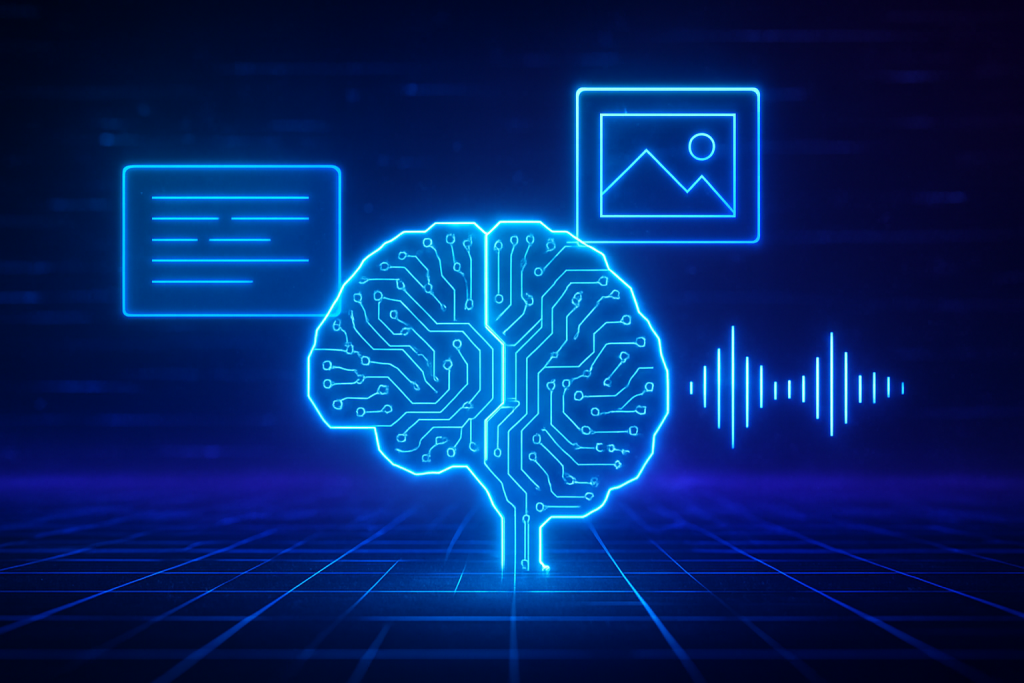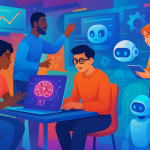The air crackled with anticipation. It wasn’t the kind of buzz you get before a new iPhone announcement or the latest Marvel movie. This was different. This was… existential. On June 9th, 2025, OpenAI dropped the bomb: GPT-5 had arrived. And the world, as we knew it, tilted on its axis just a little bit more.
For those who haven’t been following along, OpenAI’s GPT series is basically the Michael Jordan of natural language processing. They keep upping their game, leaving the competition in the dust. GPT-4, released back in ’23, was already mind-blowing, capable of juggling text and images like a digital Cirque du Soleil performer. But GPT-5? GPT-5 is aiming for the moon. And possibly Mars. And maybe even a quick stop at Alpha Centauri while it’s at it.
This wasn’t an overnight sensation. OpenAI has been toiling away in their digital workshops for two long years, fueled by caffeine and the burning desire to create something truly revolutionary. Their mission? To build upon the foundation of GPT-4, refining its contextual understanding, scrubbing away biases like a digital Mr. Clean, and stuffing its already impressive brain with even more knowledge.
But what *is* GPT-5, really? Let’s dive into the juicy details.
First up: Enhanced Contextual Understanding. Remember those awkward chatbot conversations where you felt like you were talking to a particularly dense brick wall? GPT-5 aims to banish those memories to the digital dustbin. It’s designed to grasp the nuances of language, to understand the subtle cues and unspoken implications that make human communication so rich and, let’s face it, sometimes so confusing. Imagine a chatbot that actually gets your sarcasm. Scary? Maybe. But also incredibly useful.
Next, we have Multimodal Integration. GPT-4 dipped its toes into the multimodal waters, but GPT-5 is diving in headfirst. We’re talking seamless integration of text, image, and audio. Think about it: you could show GPT-5 a picture of a dilapidated engine, describe the sputtering sound it makes, and it could diagnose the problem and even suggest solutions. Forget YouTube tutorials; GPT-5 is your new digital mechanic, doctor, and interior designer all rolled into one. It’s like having Jarvis from Iron Man, but without the snark (hopefully).
Then there’s the crucial issue of Reduced Biases. AI bias is a serious problem, and OpenAI knows it. They’ve been working hard to scrub away the prejudices and stereotypes that can creep into AI models. It’s like trying to clean a stained-glass window with a toothbrush, painstaking and delicate work. The goal is to create a system that’s fair, equitable, and unbiased, a digital reflection of our best selves, not our worst. Of course, eliminating bias entirely is a Sisyphean task, but the effort is vital.
And finally, Expanded Knowledge Base. GPT-5 has been gorging itself on data like a digital Cookie Monster, devouring everything from ancient history to the latest scientific breakthroughs. This means it’s more accurate, more relevant, and more likely to provide helpful and insightful answers. It’s like having the entire internet downloaded directly into your brain, without the accompanying headaches and existential dread.
The reaction to GPT-5 has been… well, let’s just say it’s been a rollercoaster. The tech world is buzzing with excitement, developers are salivating at the possibilities, and ethicists are raising their eyebrows with concern. It’s the usual mix of utopian dreams and dystopian nightmares that accompanies any major technological leap.
The Ripple Effect
In the technology sector, developers are already dreaming up new and innovative ways to harness the power of GPT-5. We’re talking about advanced chatbots that can actually hold a conversation, content generation tools that can write articles, scripts, and even poetry, and AI-powered assistants that can manage our lives with unnerving efficiency. It’s a brave new world of automation and AI-driven creativity.
Education is another area ripe for disruption. Imagine personalized learning systems that adapt to each student’s individual needs and learning style. GPT-5 could power tutoring systems that provide customized feedback and support, helping students unlock their full potential. It’s like having a personal Yoda, guiding you on your path to enlightenment (or at least a passing grade).
But it’s not all sunshine and rainbows. The ethics of AI are a constant concern, and GPT-5 raises some serious questions. How do we ensure that this powerful technology is used responsibly? How do we prevent it from being used for malicious purposes, like spreading misinformation or creating deepfakes? These are the questions that the AI community is grappling with, and the answers aren’t always easy.
OpenAI, for their part, is putting on a brave face. Their CEO, in the official announcement, emphasized the company’s commitment to responsible AI development. “With GPT-5,” they said, “we aim to push the boundaries of what’s possible while ensuring that our technologies are developed and deployed in a manner that benefits all of humanity.” Noble words, but the proof will be in the pudding.
The Bottom Line
GPT-5 is a game-changer. It’s a powerful tool with the potential to transform industries, revolutionize education, and reshape the way we interact with technology. But it’s also a reminder of the ethical responsibilities that come with such power. As we embrace this new era of AI, we must proceed with caution, ensuring that we harness its potential for good while mitigating its potential risks. It’s like that old Spider-Man adage: with great power comes great responsibility. Let’s hope we’re up to the task.
Discover more from Just Buzz
Subscribe to get the latest posts sent to your email.


